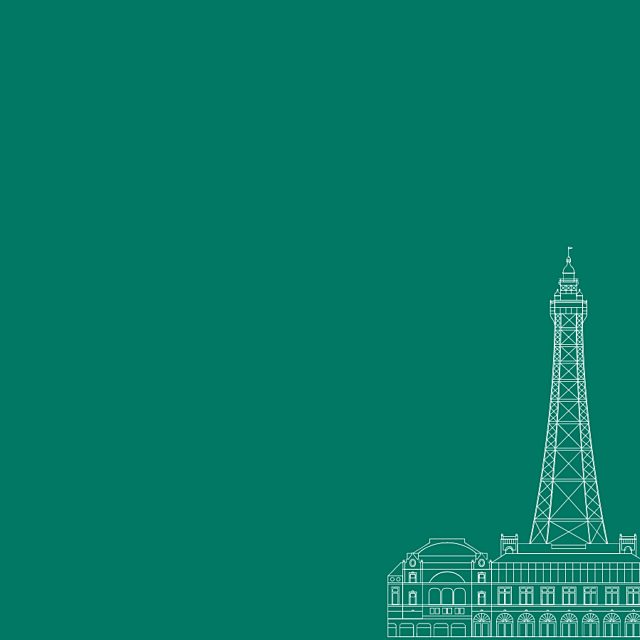By Louise Thornton

When the German army invaded Belgium in August 1914, and perpetrated atrocities against her civilians, a quarter of a million Belgians sought refuge in Britain. Over the course of the war more than 2,000 of them came to Blackpool. Some stayed for a short time then moved on, particularly for employment. Young, single men left when conscripted into the Belgian army. Some remained for the duration, and a few never left.
The first Belgians arrived from the clearing house in London in October 1914 and were quartered in the Wesleyan School in Alexandra Road. Some of those who followed went to the Castle at Bispham. Later, billets were found for them in lodging houses.
Blackpool Herald reported that the first group consisted of 40 men, 35 women and 10 children including a baby who had been born on the sea voyage. They were described as middle class. London was requested to send more, ‘Of the destitute, working and artisan classes.’
The Belgian Refugees’ Committee was formed, taking an office in the Empress Buildings in Church Street. They worked tirelessly arranging accommodation and employment. Appeals went out for clothes and footwear as many refugees had nothing more than what they stood in.
Blackpool Council addressed the children’s education and allocated places in Roman Catholic or Church of England schools according to the parents’ wishes. Moreover, the Corporation established a Belgian school within Revoe Council School, which opened on 12 April 1915. The headmistress was the Reverend Mère Angèle, who was assisted by three other Ursuline nuns. Female Belgian teachers were recruited, whose wages were paid by Blackpool Education Department. Although other Belgian schools were created in Britain during the First World War, Blackpool’s was the only one in the country run by the local education committee, sustained by the public rates. Additionally, there were Belgian teachers employed at the Victoria C of E school in Tyldesley Road.
A Belgian Club was started in Redman’s Buildings, Central Beach, and some of the French-speaking Belgians joined the Cercle Français, whose members offered to interpret for the refugees. For the Flemish speakers, translations were provided by the Reverend P Genicot, a native of Belgium living in Lytham Road.
Dr Victor Philippe of Brussels was the medical officer sent from London who held his surgery at the rear of Central Pier, and school age Belgian children benefitted from examinations of eyes and teeth alongside their English counterparts. Many church groups and charitable organisations arranged events which took the form of whist drives, bazaars, exhibitions and musical evenings in aid of the Belgian Relief Fund. Most people showed solidarity with the refugees and welcomed them. Indeed, throughout the war there were few reports of incidents in the local press.
However, once the armistice was signed in November 1918, talk turned to repatriation and the sooner the better - returning soldiers would need employment and Belgium needed rebuilding. Eventually, in order to expedite repatriation a scheme providing free passage home was announced and Blackpool’s Belgians were told to register their intention to leave by 24 February. Only those whose towns had been devastated, and had no family to take them in elsewhere in Belgium, were to stay behind; along with some too ill to travel they numbered about a hundred. There were also four Belgian women who had found husbands in Blackpool.
Farewell events were organised; the Cercle Français met with their Belgian friends for the last time at Collinson’s Café in West Street and the children of the Belgian School at Revoe gave a concert for various dignitaries, singing in two languages including some popular ragtime. The Chairman and the President of the Belgian Refugees’ Committee gave addresses imploring the children to retain the English they had learned. They had both recently been decorated by the King of the Belgians in recognition of their work.
Departure day was 7 March 1919 for a total of 695 Belgians from Blackpool and the surrounding area. Amongst them were Rev Mère Angèle and the nuns of the Ursuline Convent. Also traveling was a Blackpool lady with her Belgian husband and their two-month old son. Dr Philippe accompanied the party on the train.
A large crowd gathered at Talbot Road railway station to say their goodbyes and a banner was suspended over the entrance which read, ‘Bon Voyage: Belgium Liberated.’
A special train had been chartered and clearly this was an advertising opportunity too good to miss as posters on the carriage windows proclaimed, ‘This train conveys 800 refugees to their homes in Belgium after four years’ sojourn in bright and breezy Blackpool.’ Every person was given a food parcel for the journey supplied by the National Food Fund along with a ‘Good Luck’ card and a commemorative edition of a Blackpool guide.
Speeches were made and tears were shed and as the train steamed away there were cries from the refugees of, ‘We shall never forget.’ Then they were gone, first to Hull to the SS Ajax bound for Antwerp, and onward to their towns and villages across Belgium.
Reverend Genicot wrote to the Council expressing his gratitude for their attention over the years to the education of the Belgian children. Local newspapers reported the departure of the refugees along with statistics related to their stay; more than £131,000 had been paid to householders for billeting in the Fylde area; over 7,000 cases had been dealt with at the weekly Emergency Committee meetings; over 19,000 articles had been distributed by the Wardrobe Committee including 4,000 pairs of boots and shoes. There had been more than 36,000 medical interviews with 21,000 prescriptions issued and 150 operations performed at the Victoria Hospital. There had been 125 births and 75 burials.
In his speech on the station platform the Chairman of the Belgian Refugees’ Committee had declared, ‘The case of the refugees was perhaps one of the most wonderful achievements of Blackpool…’ Yet, over the intervening 100 years its Belgian colony has been largely forgotten.



